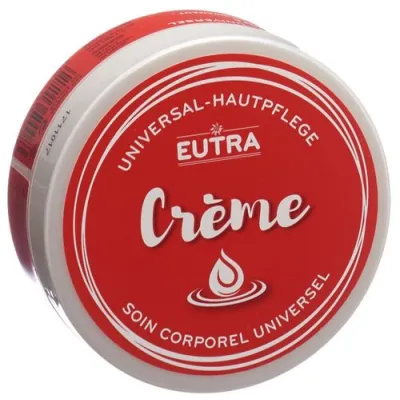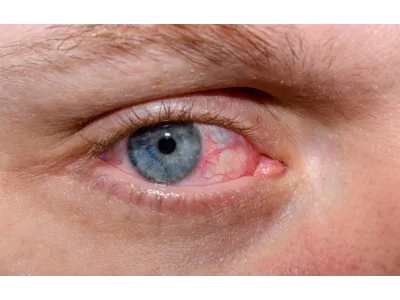Skin Protection: The Ultimate Cream for Dry and Very Dry Skin

People experience dry skin from time to time, so it's important to find the right moisturizer that hydrates, nourishes and restores the skin's delicate barrier. Skin can become dry due to cold, excessive heat or chronic diseases, so this article will help you choose the perfect cream that will remove all the symptoms of dryness and make your skin healthy and radiant.
Dry Skin and Its Characteristics
Dryness of the skin, medically known as xerosis, is a common condition in which there is a lack of the necessary amount of moisture or fat in the outermost layer of the skin, the epidermis. This condition can affect any part of the body, but is most often seen on the hands and feet. Skin dryness is manifested by the following characteristics:
- Rough Texture and Flaking: The skin is rough to the touch, often described as fine sandpaper. Scaling is also present, which varies from mild to severe.
- Itching and redness: Dry skin is often itchy, ranging from a mild, temporary irritation to a serious condition that interferes with daily activities. Also, the skin looks redder than usual, especially in areas where it is most dry or where scratches occur.
Problems Faced by Individuals with Extremely Dry Skin
People with very dry skin or xerosis have problems that affect their quality of life and cause physical discomfort, and can lead to more serious skin problems.
- Increased sensitivity: Extremely dry skin is prone to sensitivity reactions because the lack of moisture breaks down the skin's protective barrier. This increased sensitivity means that skin care products, environmental factors, and even fabrics that would not normally cause a reaction cause redness, itching, and irritation. Identifying and avoiding triggers is a constant challenge, limiting your choices of cosmetics, detergents, and clothing.
- Proneness to irritation and inflammation: Without proper hydration, the surface of the skin is more easily damaged and susceptible to external irritants such as soap, chemicals and allergens. The constant itching associated with dry skin leads to scratching, further inflaming the skin. It also provokes an exacerbation of eczema, when the skin becomes red, inflamed and itches even more.
To avoid the problems of very dry skin, turn your attention to Hametum crema, which contains herbal active ingredients Hamamelis virginiana, virgin witch hazel. Hamamelis was and is an integral part of the medical knowledge of North American Indians. Hametum is a gentle cream for the care of very dry and sensitive skin that is subject to stress. The light, fast-absorbing cream is therefore particularly suitable for the care of damaged skin after shaving (e.g. on the face or legs) or as a hand or face moisturizer. Redness and itching are reduced, and the skin becomes more elastic and smooth.
Hametum cream 50 g
Hametum Cream 50 g is a premium product manufactured by the renowned brand, Hametum. This cream is a must-have necessity for individuals seeking a solution to various skin-related issues. Its versatile usage and beneficial properties make it an ideal choice for your skincare routine. Features of Hametum Cream: Premium quality: Manufactured by Hametum, a brand known for its high-quality products. This cream upholds the brand's reputation by delivering superior performance. Weight: Convenient 50 g package size that is perfect for both home and on-the-go use. Versatile usage: Can be used for a variety of skin conditions, making it a versatile addition to any skincare routine. Benefits of Hametum Cream: Effective treatment: Known for its efficacy in treating various skin conditions, providing relief and promoting skin health. Easy to apply: The cream's consistency makes it easy to apply and absorb, ensuring optimal results. Dermatologically tested: Tested by dermatologists, this cream is safe for use on all types of skin. Use Cases of Hametum Cream: Home use: Keep a tube of Hametum Cream at home to treat unexpected skin issues. It's a great way to ensure the health and beauty of your skin. Travel use: The 50 g size makes it convenient to take with you wherever you go. It fits easily in your travel bag, so you can take care of your skin even when you're away from home. Gift: Hametum Cream makes a thoughtful gift for anyone who appreciates high-quality skincare products. It's a unique and useful present that shows you care. ..
27.85 USD
- Violation of the barrier function of the skin: one of the main functions of the skin is a barrier that protects the body from harmful microbes and aggressors of the external environment. Extremely dry skin has a broken barrier function, it is more permeable to irritants and less effective in protecting against infections. Cracks that form on very dry skin serve as a source of penetration of bacteria and fungi, which increases the risk of skin infections.
- Increased risk of dermatitis: Individuals with very dry skin are at high risk of developing dermatitis, which encompasses various types of skin inflammation. Contact dermatitis occurs when the skin reacts to substances it comes into contact with, resulting in redness, itching, and blistering. Atopic dermatitis or eczema also worsens in those with dry skin.
Key Ingredients in Products for Dry Skin Care
Dry skin needs ingredients that hydrate, nourish and protect the skin barrier. The ideal cream for dry skin contains a mixture of ingredients that eliminate the lack of moisture and strengthen the skin's natural defenses.
- Hyaluronic Acid: A powerful hydrator capable of holding up to 1,000 times its weight in water. It draws moisture from the environment into the skin, intensively moisturizes and helps tighten the skin, reduces the appearance of fine lines and wrinkles.
- Shea Seed Oil: A rich, nourishing emollient derived from the nuts of the shea tree. Filled with vitamins A and E, as well as essential fatty acids. Shea butter forms a protective barrier on the surface of the skin, preventing moisture loss and providing relief from tightness and discomfort associated with dryness.
- Ceramides: lipid molecules naturally found in the skin barrier. Ceramides prevent moisture loss and protect the skin from environmental influences. Topical application of ceramides restores the skin barrier, improves hydration and reduces dryness and flaking.
- Natural oils: such as jojoba oil, argan oil, and coconut oil are great for dry skin because of their moisturizing and healing properties. These oils mimic natural sebum, help balance sebum production, and at the same time do not clog pores. They also contain nutrients and antioxidants that support the health of the skin, making it soft, smooth and moisturized.
- Glycerin: A humectant that draws water to the skin, similar to hyaluronic acid, but also helps retain moisture by forming a protective layer on the surface of the skin.
- Aloe Vera: Creates a cooling sensation when applied to relieve irritation and inflammation associated with dry skin. Aloe vera also contains polysaccharides that help retain moisture and promote skin regeneration.
Eutra Cream: The Ultimate Skin Protection Cream
To say goodbye to very dry skin, turn your attention to EUTRA, a cosmetic and dermatological product for the care of dry and very dry skin. EUTRA cream protects the skin from external influences such as humidity, wind, rain or snow. Its formula is based on three important criteria: unique quality with substances of pharmaceutical origin, a reduced number of ingredients (6 substances) to ensure a minimal risk of allergies and a specially developed formula without preservatives, dyes, and flavorings.
Eutra cream can 150 ml
EUTRA® is a cosmetic and dermatological care product for dry to very dry skin. EUTRA® cream protects the skin against external influences such as humidity, wind, rain or snow. Its formula is based on three essential criteria: a unique quality with substances of pharmaceutical origin, a reduced number of ingredients (6 substances) to ensure a minimum risk of allergies and a specially developed formula without parabens, preservatives, colourings, stabilizers and fragrances. EUTRA® Cream is simple and practical, effective even in situations of extreme conditions (very dry skin, cracks, cracks, redness and irritation...) and offers protection and care for the whole body. div>..
21.09 USD
The cream is simple and practical, effective even in situations of extreme conditions (very dry skin, cracks, redness and irritation) and provides protection and care for the whole body.
Application Technique
Correct application of the cream provides maximum benefit, moisturizing, protection and nourishment of the skin. Adherence to the correct technique of applying the cream greatly increases its effectiveness.
A common mistake is to use too much of a product, thinking it will increase the benefits. Most moisturizers are enough for a pea-sized face, and about a quarter-sized amount for an arm or leg. It's best to start with a small amount and add more if needed, as over-application leads to product loss and clogged pores, especially on the face.
The general rule of applying a moisturizing cream is twice a day - in the morning and in the evening. However, this is influenced by the particular needs of your skin, the climate you live in, and the specific cream you use. Very dry skin or harsh weather conditions require frequent use. Conversely, if you stay in a damp surroundings or if your skin is not too dry, once a day may be enough.
Application method
The correct technique improves the effectiveness of the cream, making sure its uniform distribution and absorption. Here's how to apply the cream correctly:
- Cleanse the skin: Always observe the cream on clean skin. Use a gentle gel or foam cleaner suitable to your skin kind to dispose of dust and any traces of make-up. This ensures that your skin is prepared to fully absorb the cream.
- Apply to damp skin: Applying moisturizer to damp skin locks in extra moisture. After washing your face or taking a bath, pat your skin dry with a towel, but leave it slightly damp earlier than applying the cream.
- Use mild upward motions: Apply the cream in mild upward motions. This approach is specifically essential for the face and neck, as it enables counteract the results of gravity and prevents sagging over time.
- Don't forget about the neck and décolleté: spread the utility over the neck and décolletage, no longer simply the face. These areas also are exposed to environmental elements and display signs and symptoms of growing old.
- Give it time to absorb: Give the cream a few minutes to fully absorb into your skin before applying makeup or getting dressed. This ensures that your skin gets the full effect of hydration.
Additional skin care tips
- Layering: If you use multiple skin care products, apply them from the thinnest to the thickest consistency. For example, after cleansing, start with a toner, then a serum, and then a moisturizer.
- Adjust according to the season: Your skin's needs change with the season. You will need a thicker cream in winter, and a lighter one in summer.
- Sun protection: After applying moisturizer, add a broad-spectrum sunscreen to your morning routine to protect skin from UV damage.
Disclaimer: Readers are advised to consult a dermatologist for individualized advice, especially if there are underlying skin conditions or concerns that require professional care. While we strive to recommend products that are considered beneficial for dry and very dry skin, individual results vary from person to person.
A. Keller












